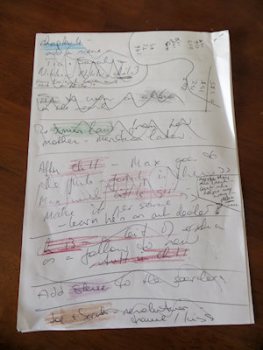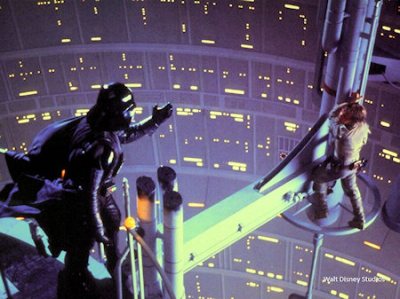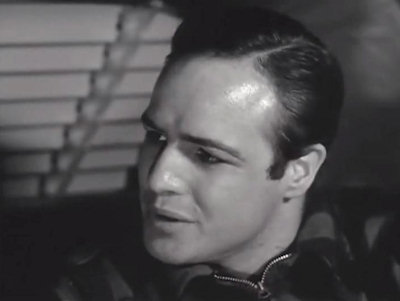
The closest I usually get to plotting is a few scribbled notes on odd bits of paper. And usually this starts when the book is half done.
Whenever a few writers get together, at some point the age old question is going to come up…. Are you a plotter or a pantser?
This of course refers to our way of working. Do you plot the novel in detail in advance or do you just sit down and fly by the seat of your pants. I tend towards the latter, but in either case, the hope is that the result will be a novel. A good one with realistic characters and a gripping plot.
Last week I was confronted by a sort of third option – plotting with a few lines of dialogue. This a really intriguing idea came from Sophie Weston, who has sold about 12 million books world-wide. That’s a very nice number. Lots of zeros involved. She was speaking at a workshop in London. This is what I took home from that workshop.
Let’s start with the traditional idea of plotting. This involves mapping out the action of the story. I know people who do it on a spreadsheet. Others do it in a document. Post it notes all over a door is another popular method, or a roll of wallpaper and a handful of coloured pens.
In this way, events are mapped out, scenes are described, characters actions and of course the all-important conflicts and resolutions. All good stuff.
At that point, if it were me, I would stop. If I know all that, there’s no reason to write the book. For me the joy of writing is the exploration: the unexpected idea that seems to just flow out of my fingertips without me really thinking about it; the way the characters slowly reveal themselves to me as I write and the times when even I start to wonder if this conflict will ever be resolved. I could never be a plotter.
But Sophie Weston suggested another idea. Dialogue. Not too much of it. Just a few lines where the characters reveal something of themselves, or react to an event. These are the key turning points of the story defined – without the detail.
Think about this moment in Star Wars….

Darth Vader holds a hand out to Luke Skywalker and says.. I am your Father.
What a moment. It’s a turning point for the film. It changes everything for Luke. And for Vader. It adds new levels to both characters and to their conflict. Four words. That’s all it took.
In Jerry Maguire, Tom Cruise says to Rene Zellweger – ‘You complete me.’ It’s the moment when he admits he loves her. When planning the story, you could write …. he goes to her house where she is with a group of female friends and then he tells her he loves her. Or, in the outline you could just write three words and let the rest flow naturally as you write.
‘You’re gonna need a bigger boat. ’ In Jaws, this is the sign of worse trouble ahead. You don’t have to decide in advance when and where and to whom that is said. It’s just a line that tells us here is a place where the stakes must be raised.
‘I coulda had class. I coulda been a contender. I coulda been somebody, instead of a bum, which is what I am.’ In On the Waterfront, Marlon Brando gives us his whole character in just two lines of dialogue.

Marlon Brando as Terry Malloy.
And let’s not forget Casablanca – with Bogie and Bergman. ‘All the gin joints in all the towns in all the world, she walks into mine.’ I don’t have to write a backstory. That line gives me all the backstory I need to know when I start writing. I can discover the details as I write.
All my books start with the opening scene in my head, and the closing scene. My job is to get my characters from scene one to the last page in a believable and interesting and moving way. I’m going to have a go at writing a key line of two of dialogue before I really get into writing the book. I need lines that say a lot about my story and characters. If I can come up with a great line, I can build the story to that point, without having to map it out scene by scene. I will know where I am going without writing so much detail that the story looses its freshness and spark.
It’s plotting, without plotting. And without giving away too much of the story to myself.
Thinking about the work in progress, I can see and hear my central character saying ‘I need your help.’ I know who she is saying it to, and just how hard it is for her to say it. That’s already telling me things about her back story and her character. I’m off now to write the next chapter.
Thank you Sophie Weston for the idea. I’ll let you know how I go.

Pingback: Plotting with dialogue — Take Five Authors | Arrowhead Freelance and Publishing
For me, stories are always about character and characters never reveal as much about themselves as when they speak. I think subconsciously J use this, but reading this post had crystallised it. Thank you!
LikeLiked by 1 person
Really interesting post – wish I’d had the courage to go to London and hear the talk. I realised that I actually do this – not as a complete plotting process, but as part and parcel of writing the whole thing. But then I do use an awful lot of dialogue – and have, in fact, had iffy reviews because of it! But I shall do it consciously now.
LikeLiked by 1 person
It would have been lovely to see you Lesley. I found this idea really intriguing. I think you may be right – a mix of notes and dialogue might work really well. I’m always up for trying something new. I’m surprised you get iffy review because you use a lot of dialogue – I like your use of dialogue. J X
LikeLike
Pingback: Plotting with dialogue | Maggie Cammiss
Pingback: Plotting with dialogue – Take Five Authors – Jenny Harper Author
It’s a really intriguing idea, though I’m not sure I could do it. I’m a weird mixture somewhere between plotter and pantster – I need to plot, but often it all changes, sometimes a lot, somewhere along the journey. I do have the opening scene of my next novel in my head though – and that has helped me to work out whose story it is and how I might tell it. I’m just not exactly sure what the story is yet. Maybe I’ll hear some voices soon? That would be great!
LikeLiked by 1 person
I am so glad I am a writer Jenny… Otherwise saying I hear voices in my head is likely to lead to unexpected consequences.
LikeLiked by 1 person
I love this idea. Thanks to Janet and to Sophie for sharing it. It’s made me realise I’ve done this before but without really thinking about it … now I will use it more consciously! Great stuff. x
LikeLiked by 1 person
Sophie Weston always has something good to say… she always inspires me.
LikeLike
I really like this plot idea, Janet. And your examples are brilliant. Talk about show, don’t just tell!
LikeLiked by 1 person
Hi Elizabeth. The more I think about it, the more eager I am to give it a try.
LikeLike
Reblogged this on djpaterson and commented:
Plotting with dialogue: a really interesting blog post from Janet Gover over on Take Five Authors.
LikeLiked by 1 person
Sounds an interesting method to try, Janet. Thanks for passing it on.
LikeLiked by 1 person
There are so many different ways of writing – I’m always interested in how other writers work. You never know when something is going to strike a chord.
LikeLiked by 1 person
I really think that this is a fantastic way to plot, for me it has worked rather well in making character conflicts even deeper, all the while having foreshadowing occur within the book itself. And I think that it’s extremely easy to do, just think up the words your characters are saying rather than focusing on the description and it always ends in a pretty interesting point of conflict.
LikeLiked by 1 person
It’s interesting to hear that others use the technique with success. I’m definitely going to try it and see what happens. Thanks for dropping by.
LikeLike
Really glad (not to mention flattered) that you found that bit of the talk useful. With my present book I’m using a timeline, which keeps me on track. But I think I’ll go back to a dialogue spine when I start the next.
So look forward to hearing how it works for you. AND to reading the book that results.
LikeLiked by 2 people
It was a really interesting talk – lots to think about. I’ll let you know how it goes.
LikeLike
Great post Janet. Interesting way of plotting. Might try it myself. I find as you write bits of dialogue pop into your head so it’s a good way of putting them to use 😀
LikeLiked by 2 people
I hear my characters speaking in my head – so this might work for me. And, as you say, a great way to keep those bits of dialogue and not forget them.
LikeLiked by 1 person